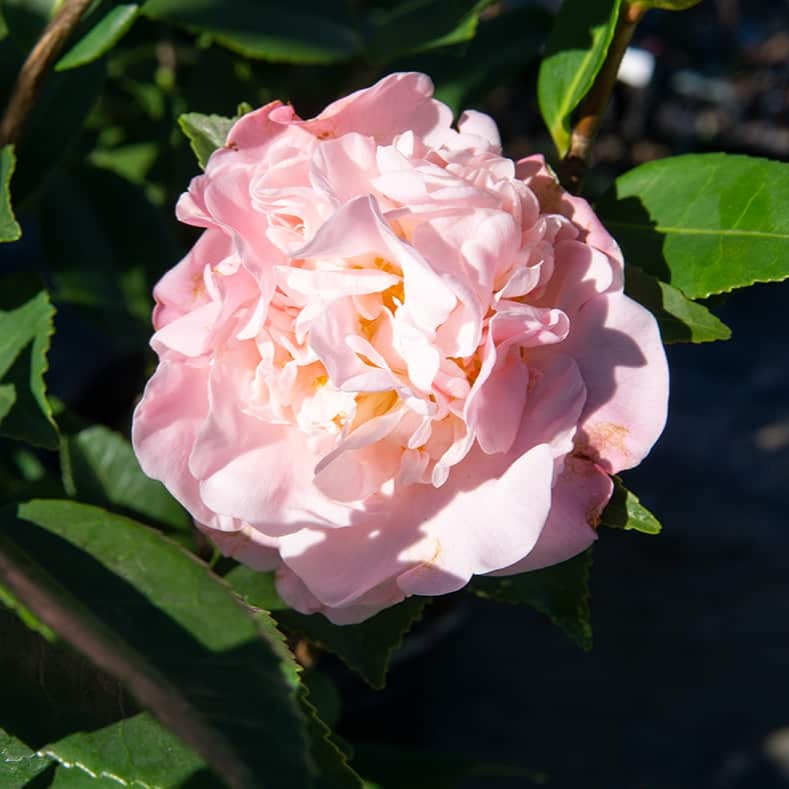Low-maintenance dwarf evergreens for small spaces – 5 easy-to-grow compact plants for year-round greenery
These easy evergreens will inject structure and impact to a small yard
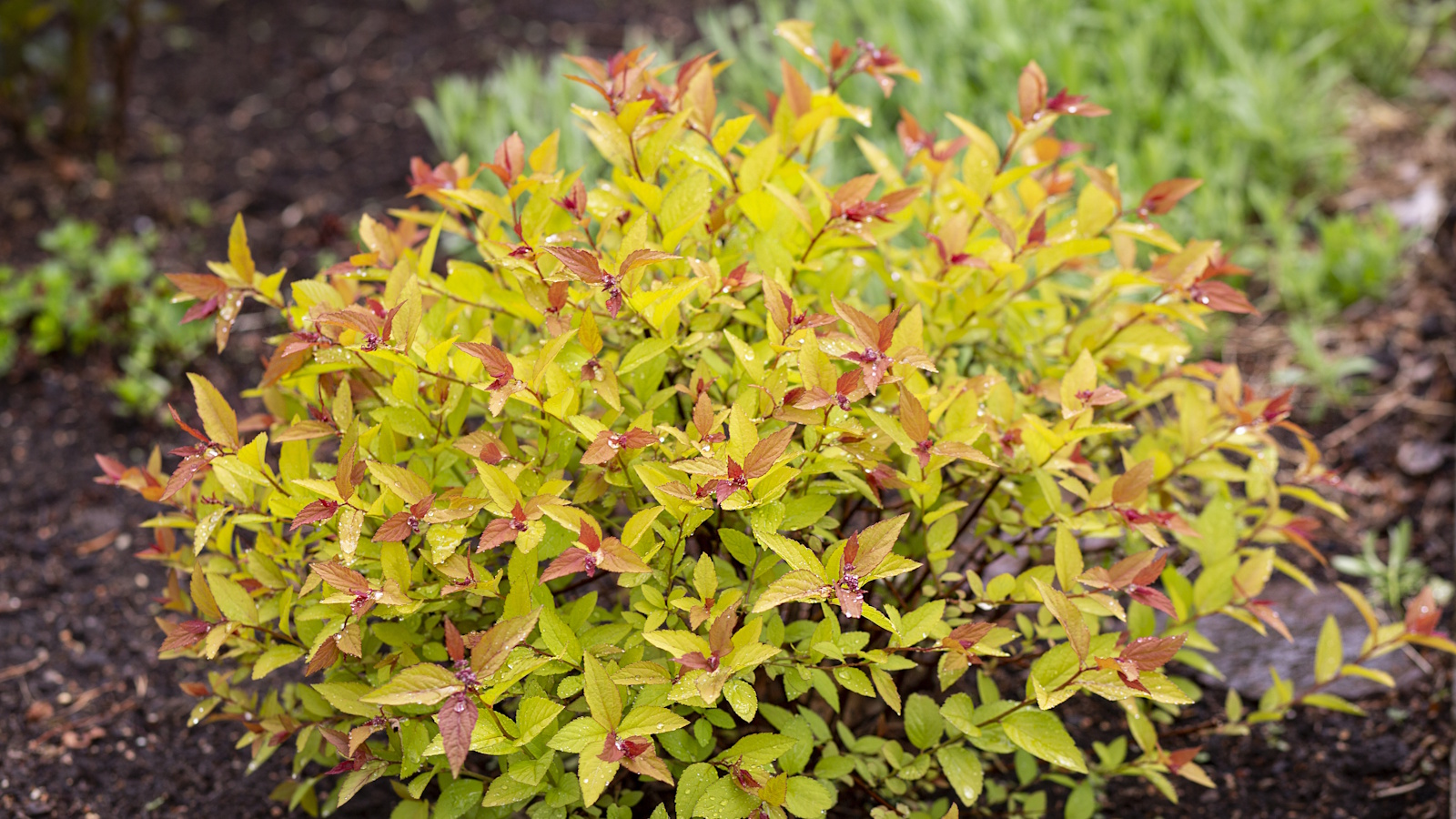

Dwarf evergreen shrubs can help to elevate even the smallest of gardens. Adding structure, texture and color wherever they are planted, compact evergreen plants such as hebe and heather will maintain interest whatever the season.
During my time as a professional gardener, I cared for many different evergreens, ranging from cloud-pruned Japanese holly to clipped yew domes. While these plants can be used in any yard, evergreens really come into their own in small plots where space is at a premium. Using evergreen plants that are not limited to spring or summer maximizes interest, and let's face it - looking at greenery is far more desirable than staring at empty borders in December or January.
Fortunately for us, many compact species are remarkably easy to grow, and with an occasional prune and feed, these low-growing plants will thrive for many years to come. So, if you’re seeking low-maintenance dwarf evergreens that are high-impact but low-effort, we have put together a list of five of the best to try this year.
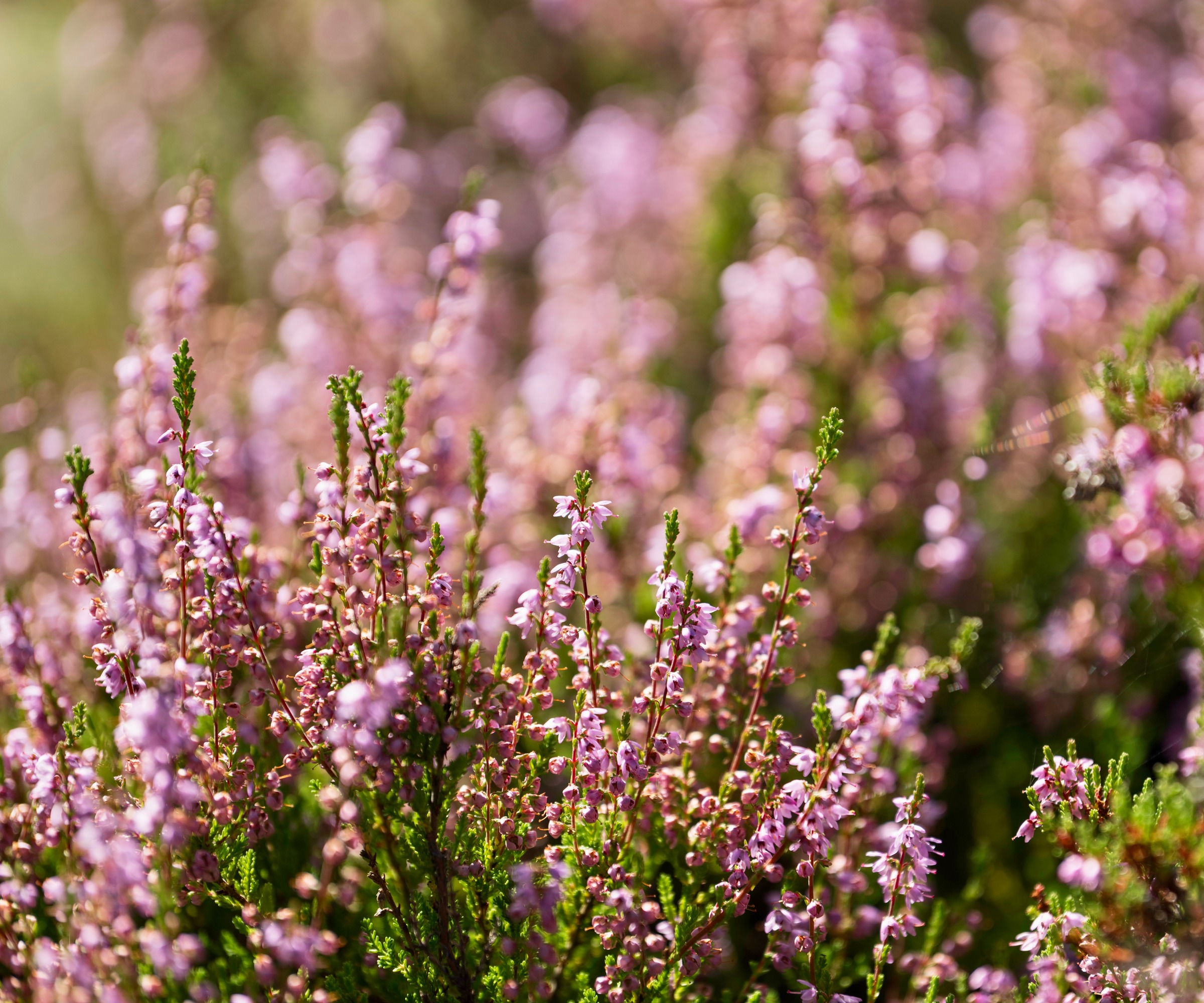
5 low-maintenance dwarf evergreens
When landscaping with evergreens, remember to select species that are best suited to your climate and US hardiness zone. For example, if you reside in zone 9, you will be able to grow tender evergreens that require year-round warmth, whereas in zone 5, opting to grow hardy native species that can tolerate snow and frost is wise. Here are five low-maintenance dwarf evergreens to plant this year.
1. Podocarpus
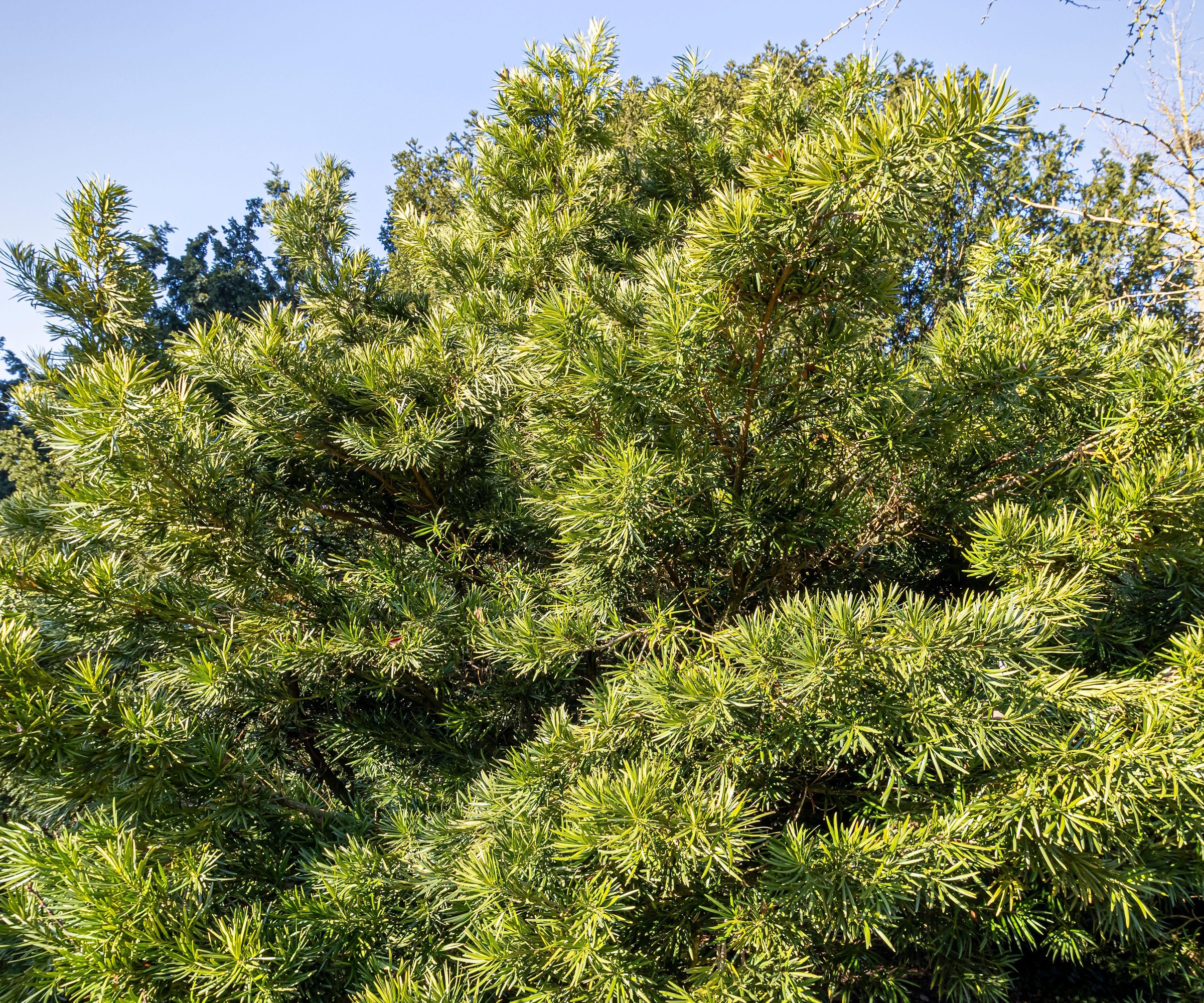
'Podocarpus are popular low-maintenance evergreen shrubs,' says Alex Kantor, owner of Perfect Plants Nursery. 'For a dwarf variety, try Podocarpus macrophyllus 'Pringles Dwarf', which offers year-round interest with minimal care requirements.
'Hardy down to zone 8, this variety is best suited to mild regions,' Alex says. 'Podocarpus love the heat of the South, and generally will not survive frozen winters the likes of which you find in the north of the country. Yet, it is an excellent choice for adding structure to small outdoor spaces.
'While adaptable, this plant prefers good drainage, in a sunny or part-shaded spot. Prune in late winter or early spring to keep your plant compact and bushy, and you can also apply a balanced slow-release fertilizer in April or May to give the shrub a boost.'
Podocarpus macrophyllus 'Pringles Dwarf' live plants are available from Perfect Plants Nursery.
Podocarpus are considered poisonous plants and are toxic to humans and pets. If planting or pruning, be sure to wear protective gloves to prevent skin irritation. Try something like these long-sleeved gardening gloves from Amazon.

Alex has worked in the horticultural industry for over 20 years and grew up on the farm since his childhood years. Alex is an expert on landscape trees, shrubs, and indoor plants. He is passionate about growing and helping others learn the trade.
2. Winter heather

With evergreen foliage and pretty, long-lasting blooms, winter heather – commonly known as winter heath or Erica carnea – is one of the best low-maintenance dwarf evergreens to add to garden borders.
Hardy down to zone 5, winter heather prefers a sunny spot which will encourage flower production. In terms of how to grow and care for winter heather, this species thrives in poor soil, making it a good option for gardeners with free-draining, sandy or acidic borders.
To give plants a boost, use an ericaceous potting soil, available from Amazon, mulching around your plants once a year in fall or spring. Winter heathers tend to flower from December through until March, so pruning after this will keep plants compact and bushy.
Heather seeds are available from Amazon.
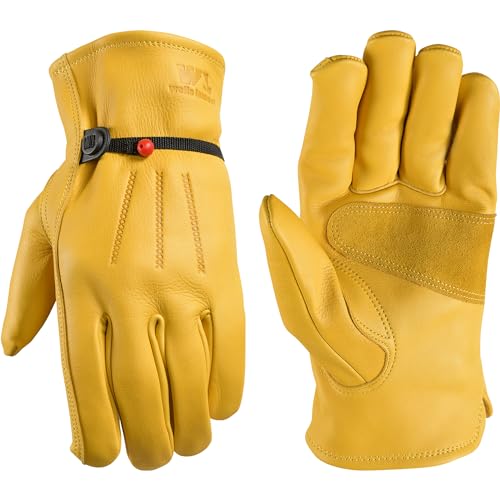
These yellow gardening gloves are tough and durable, helpful when planting and pruning in the garden borders.
3. Lingonberry
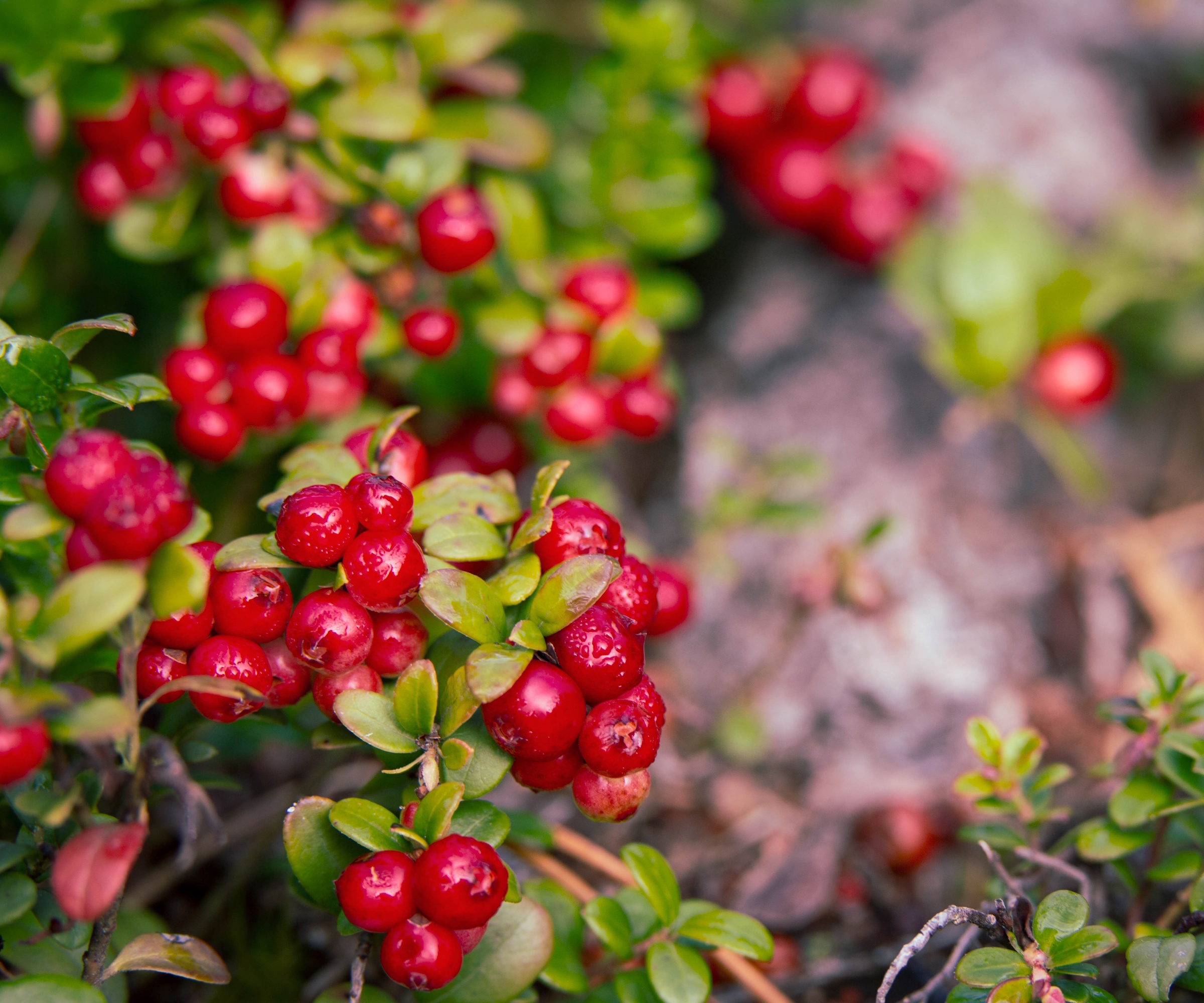
'If you are looking for low-maintenance evergreen ground cover plants, why not grow the North American lingonberry,' says Tabar Gifford, plant expert and American Meadows master gardener.
'I highly recommend lingonberries for anyone seeking a low-growing, robust native plant,' Tabar adds. 'In terms of how to grow lingonberry, this hardy species can be planted from zone 2 plus, making it ideal for cooler regions.
'Lingonberries, or Vaccinum vitas-idaea, do best in sunny situations, although they can be planted in shade. Just remember that the more shade, the fewer flowers and berries that will be produced.'
Most lingonberry varieties won't reach any taller than one or two feet tall and can be grouped together to create a dense carpet under trees or shrubs. Alternatively, use this wildlife-friendly plant to line garden paths or patios.
As a slow-growing plant, you shouldn't need to prune this plant very regularly, although snipping the ends of the stems will encourage bushy and compact growth. When pruning, use clean, sharp secateurs like these Felco snips from Walmart.

Tabar Gifford works as an American Meadows Master Gardener, and has a lifelong love for gardening and nature. With a background in environmental studies and sustainable community development, she enjoys combining her horticultural expertise with a commitment to education.
4. Mahonia 'Soft Caress'
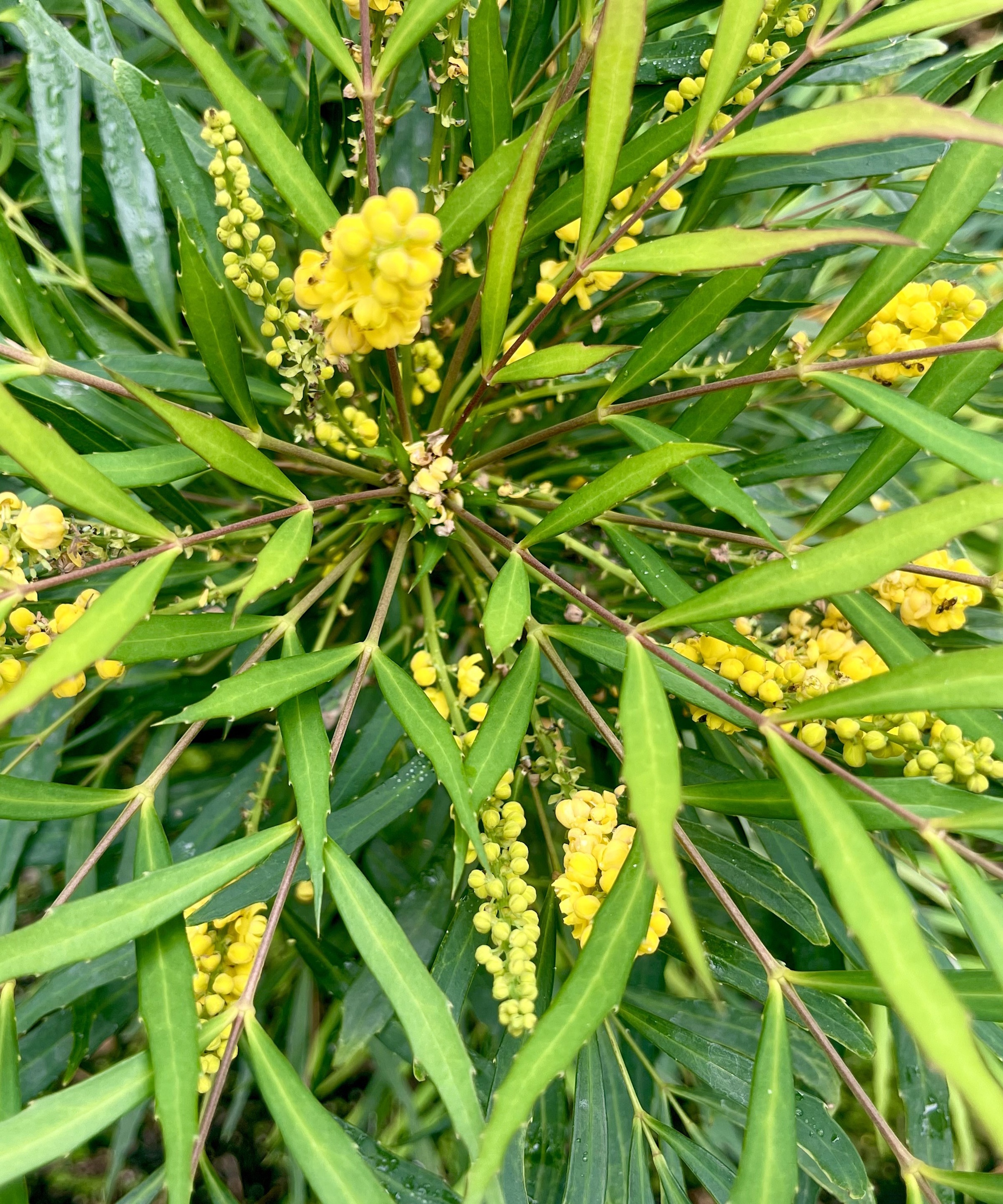
Mahonia 'Soft Caress' is a compact evergreen shrub that grows no bigger than three or four feet tall. When working as a gardener in London, I grew this variety in a container in a front yard, and found it low-maintenance and hardy, tolerating cold weather down to zone 7.
Mahonia 'Soft Caress' live plants are available to order from Amazon.
When considering how to grow mahonia, these evergreens do best in part-sun-part-shade, with a preference for moist but well-drained soil. While hardy, mahonia plants will appreciate a sheltered position away from strong winds.
In contrast to other mahonia varieties, 'Soft Caress' doesn't have spiny leaves, which is why many gardeners prefer it. Pair with ferns and fatsias for an impactful evergreen foliage display. While low maintenance, remember to mulch your evergreens in fall or winter to improve soil health and structure.
5. Dwarf spirea
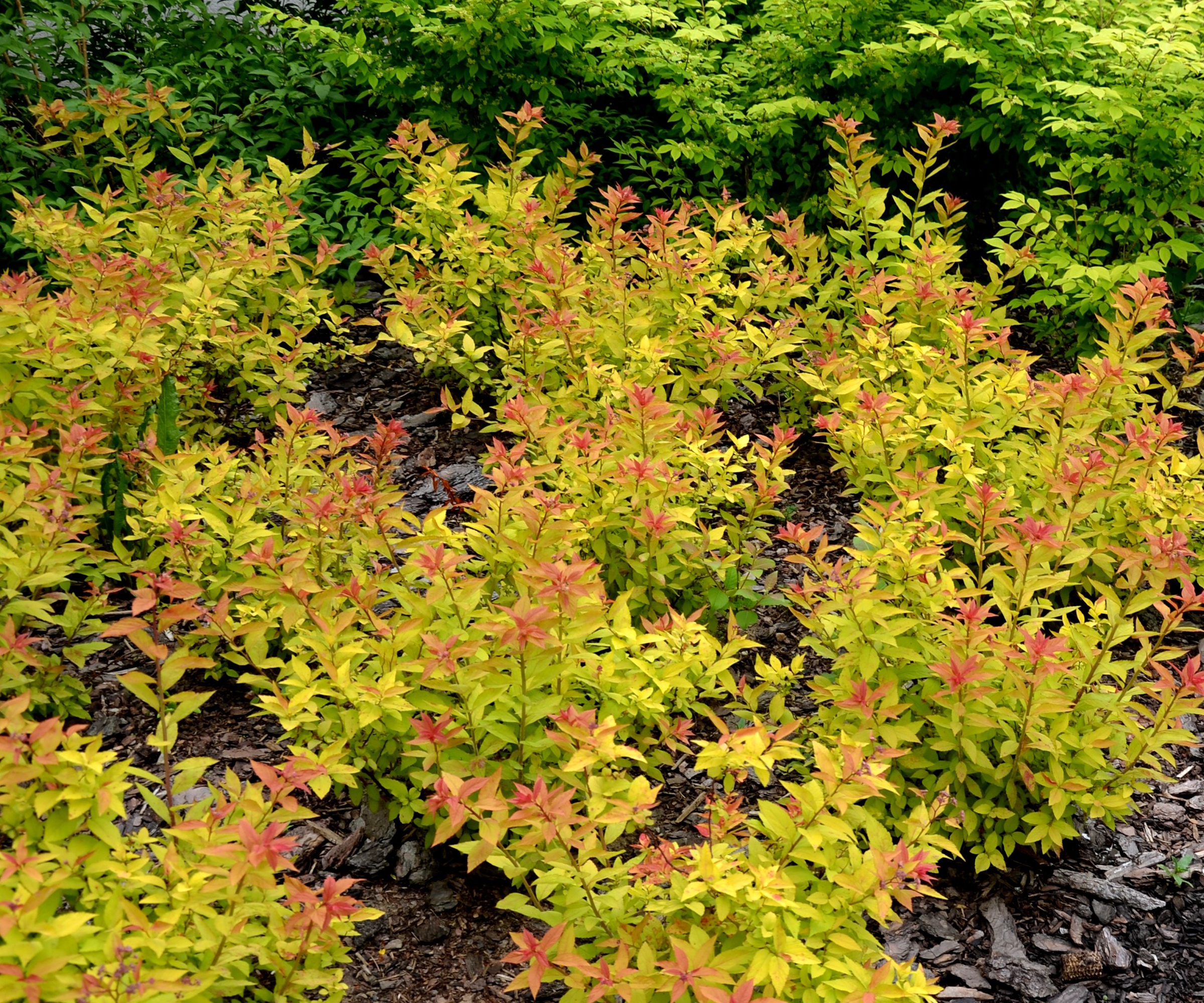
Spiraea, sometimes spelled spirea, are some of the best shrubs for the front of the house. Most are deciduous, although some species are semi-evergreen and will maintain their attractive foliage year-round.
While there are many spiraea varieties to choose from, one dwarf option of note is the 'Goldflame' spirea, or Spiraea x bumalda 'Goldflame'. As you can see in the image here, this low-growing plant has attractive foliage with a reddish tint, reaching a height of two or three feet. Plant it in a sheltered spot to give the plant the best chance of retaining its foliage.
Hardy down to zone 4, plant the 'Goldflame' spiraea in a sunny spot with well-draining soil. To maintain its bushy habit, learning how to prune spiraea is a good idea. While not complicated, annual trimming in spring will keep it looking its best.
'Goldframe' spirea live plants are available from Walmart.
FAQs
What is a low-maintenance evergreen species to use for topiary?
'For a low-maintenance topiary plant, opt to grow Ilex crenata 'Steeds', which is an effortless and resilient evergreen that grows to a height of six feet,' says Alex Kantor.
'Hardy to zone 5, this tough species can be grown in part shade and will tolerate most soil types. Just be sure to prune it once or twice a year to maintain its desirable topiary shape, whether cloud, dome, pyramid or otherwise.' Japanese holly live plants are available from Perfect Plants Nursery.
In terms of when to fertilize evergreens, this is usually done during the growing season, with spring being an ideal time to feed plants. Use a product that has been specifically designed for evergreens, such as this organic evergreen feed by Espoma, available from Amazon.
For more planting inspiration, see our guide to the best evergreen ferns, to add even more foliage interest to your plot this year.
Sign up to the Homes & Gardens newsletter
Design expertise in your inbox – from inspiring decorating ideas and beautiful celebrity homes to practical gardening advice and shopping round-ups.

Thomas is a Content Editor within the Gardens Team at Homes and Gardens. He has worked as a professional gardener for both public spaces and private estates, specializing in productive gardening, growing food and flowers. Trained in Horticulture at the Garden Museum, he has written on gardening and garden history for various publications, including The English Garden, Gardens Illustrated, Hortus, The London Gardener and Bloom. He has co-authored a Lonely Planet travel book, The Tree Atlas, due out in 2024.
You must confirm your public display name before commenting
Please logout and then login again, you will then be prompted to enter your display name.
-
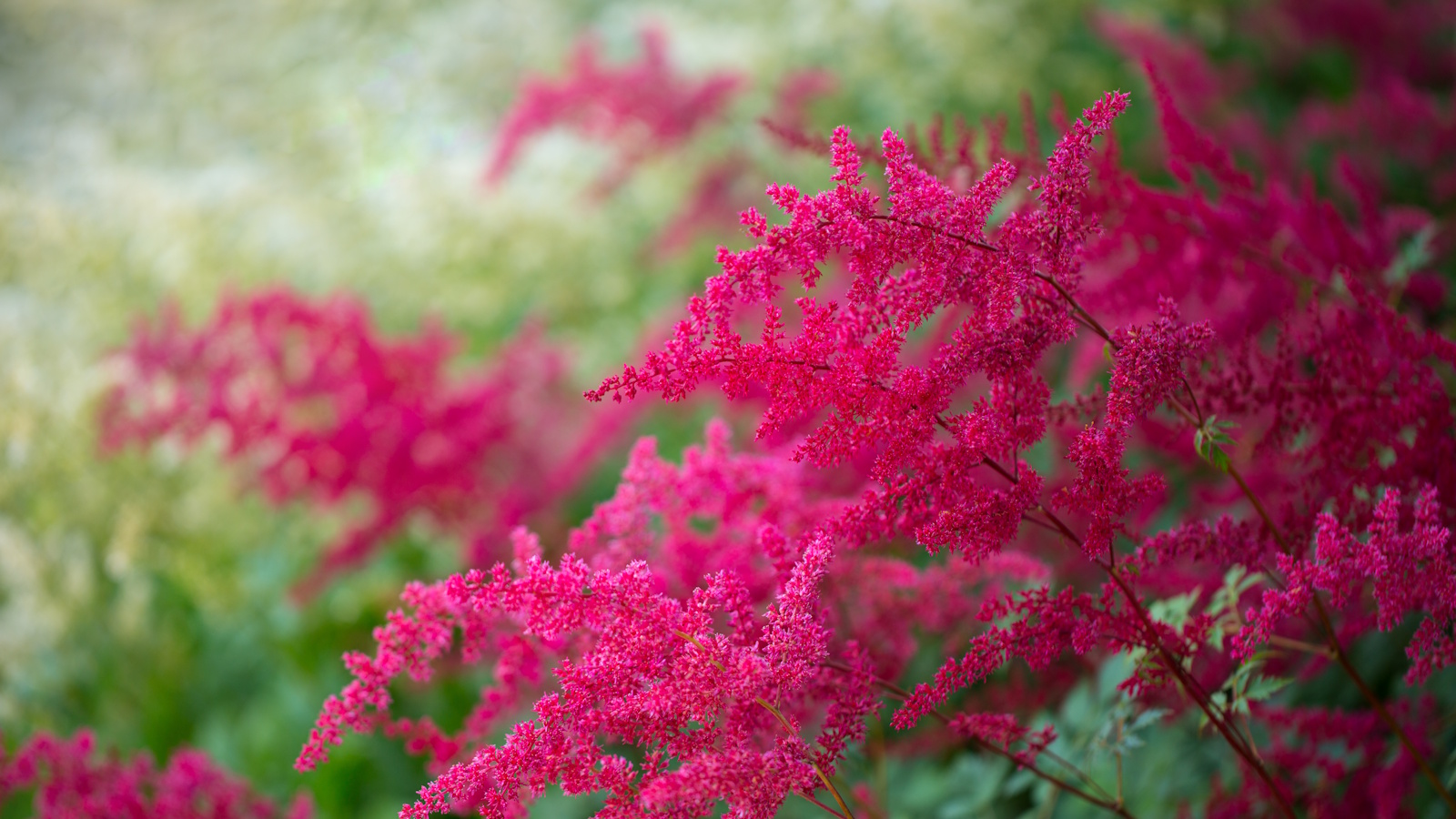 How to grow astilbe – expert advice on cultivating this shade-tolerant flowering perennial
How to grow astilbe – expert advice on cultivating this shade-tolerant flowering perennialShade-tolerant and pest-resistant - astilbe are hardy and tough perennials that can thrive in many settings
By Ellen Wells Published
-
 Vintage prints are making a comeback – designers say to look out for these 5 nostalgic patterns this year
Vintage prints are making a comeback – designers say to look out for these 5 nostalgic patterns this yearThese vintage-style patterns are all the rage right now, and we spoke with design experts to learn how best to style them in the home
By Eleanor Richardson Published
-
 How to grow astilbe – expert advice on cultivating this shade-tolerant flowering perennial
How to grow astilbe – expert advice on cultivating this shade-tolerant flowering perennialShade-tolerant and pest-resistant - astilbe are hardy and tough perennials that can thrive in many settings
By Ellen Wells Published
-
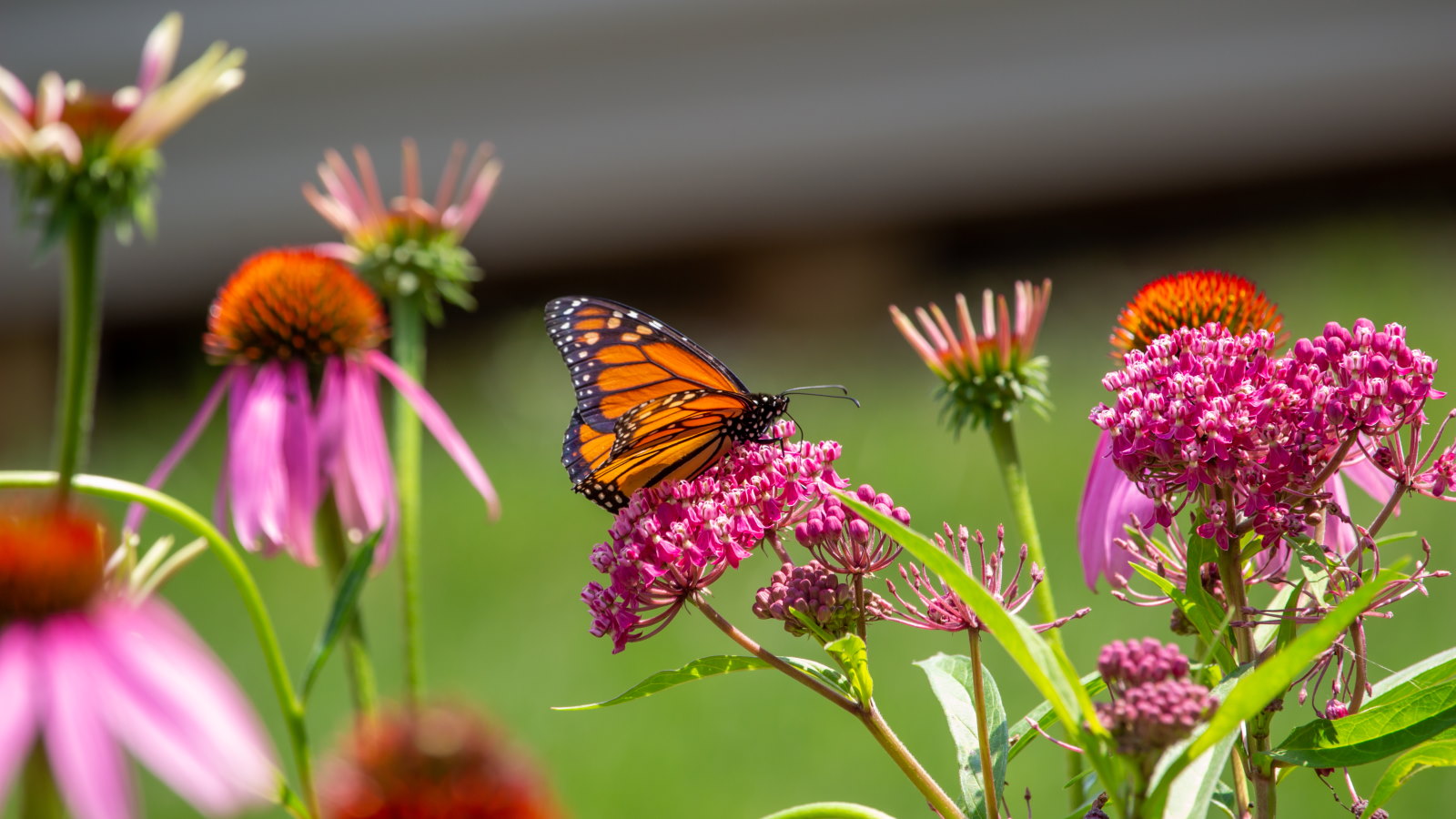 7 native perennials to plant in April – for glorious flowering displays to attract bees, butterflies, and hummingbirds
7 native perennials to plant in April – for glorious flowering displays to attract bees, butterflies, and hummingbirdsDiscover some of the best perennials to plant in April to make your garden a hotspot for wildlife
By Drew Swainston Published
-
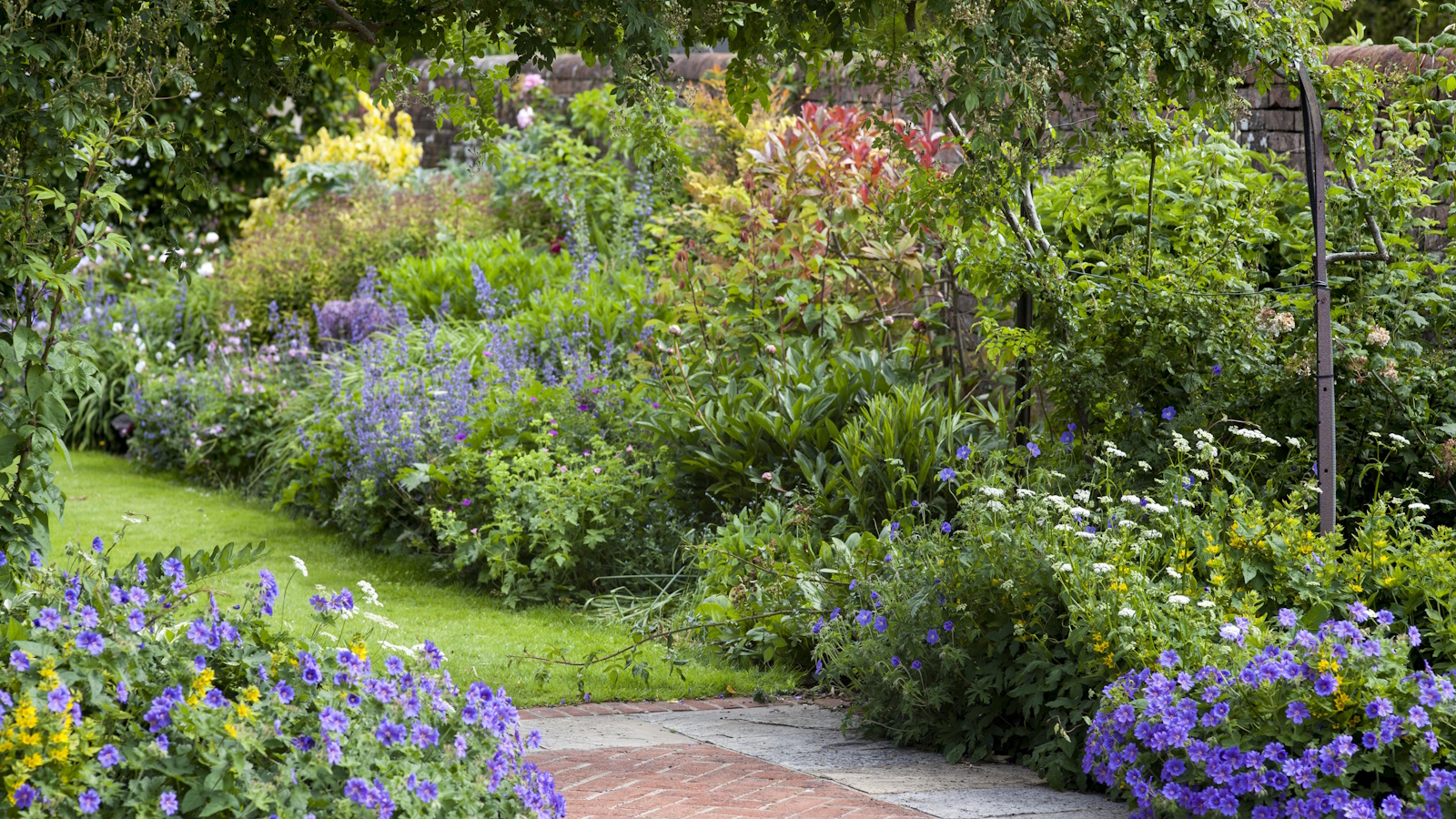 Is the viral salt hack the secret to a weed-free patio? A garden expert warns of irreparable, long-term damage – plus reveals the safest way to get results
Is the viral salt hack the secret to a weed-free patio? A garden expert warns of irreparable, long-term damage – plus reveals the safest way to get resultsYou might have seen gardeners on TikTok or Instagram using salt to kill weeds in pavers, but this hack should be avoided at all costs
By Thomas Rutter Published
-
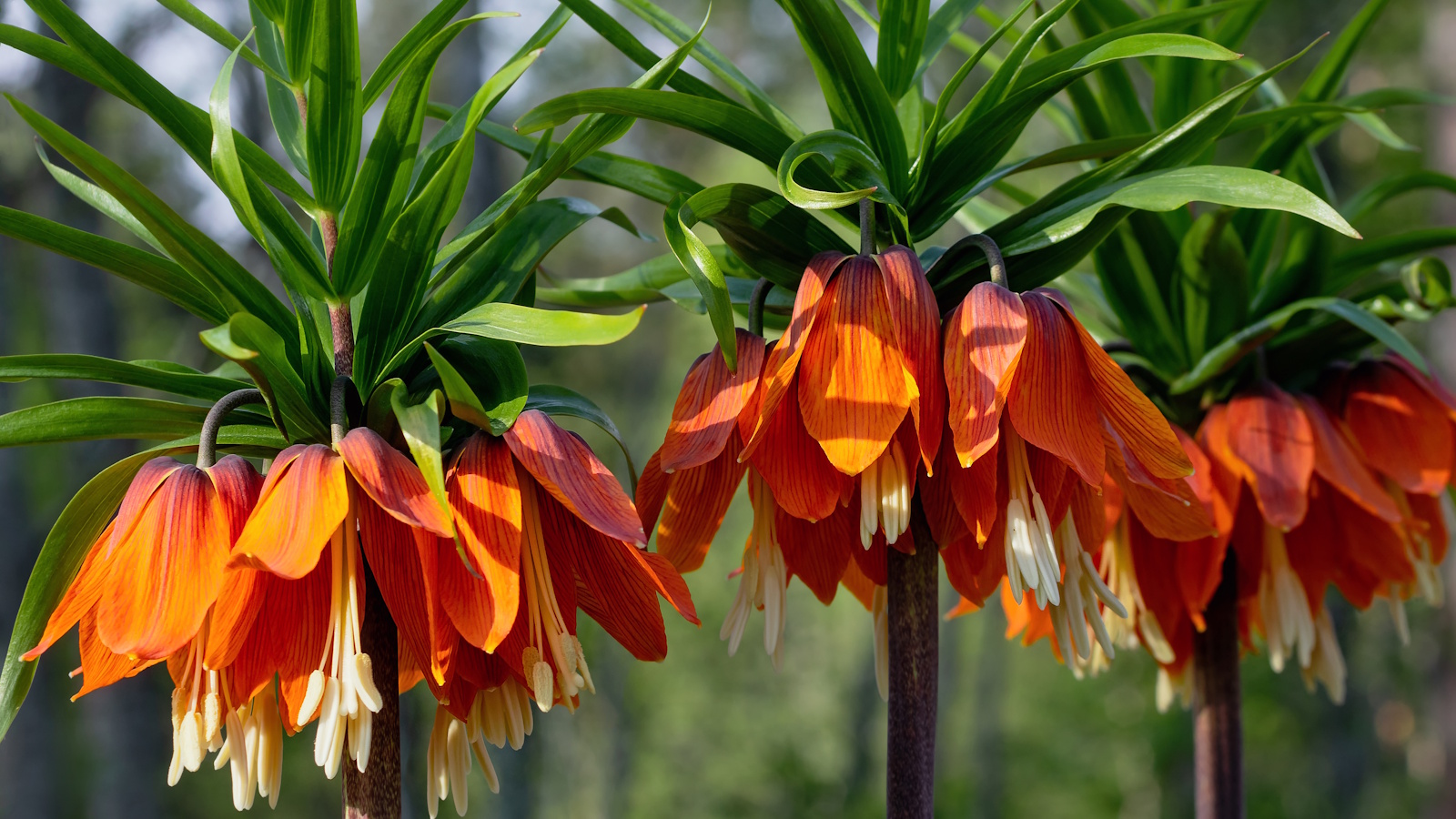 Worst-smelling plants to avoid – experts reveal 5 pungent species and suggest perfumed options to grow instead
Worst-smelling plants to avoid – experts reveal 5 pungent species and suggest perfumed options to grow insteadThese are some of the worst-smelling plants that can cause quite a stink
By Thomas Rutter Published
-
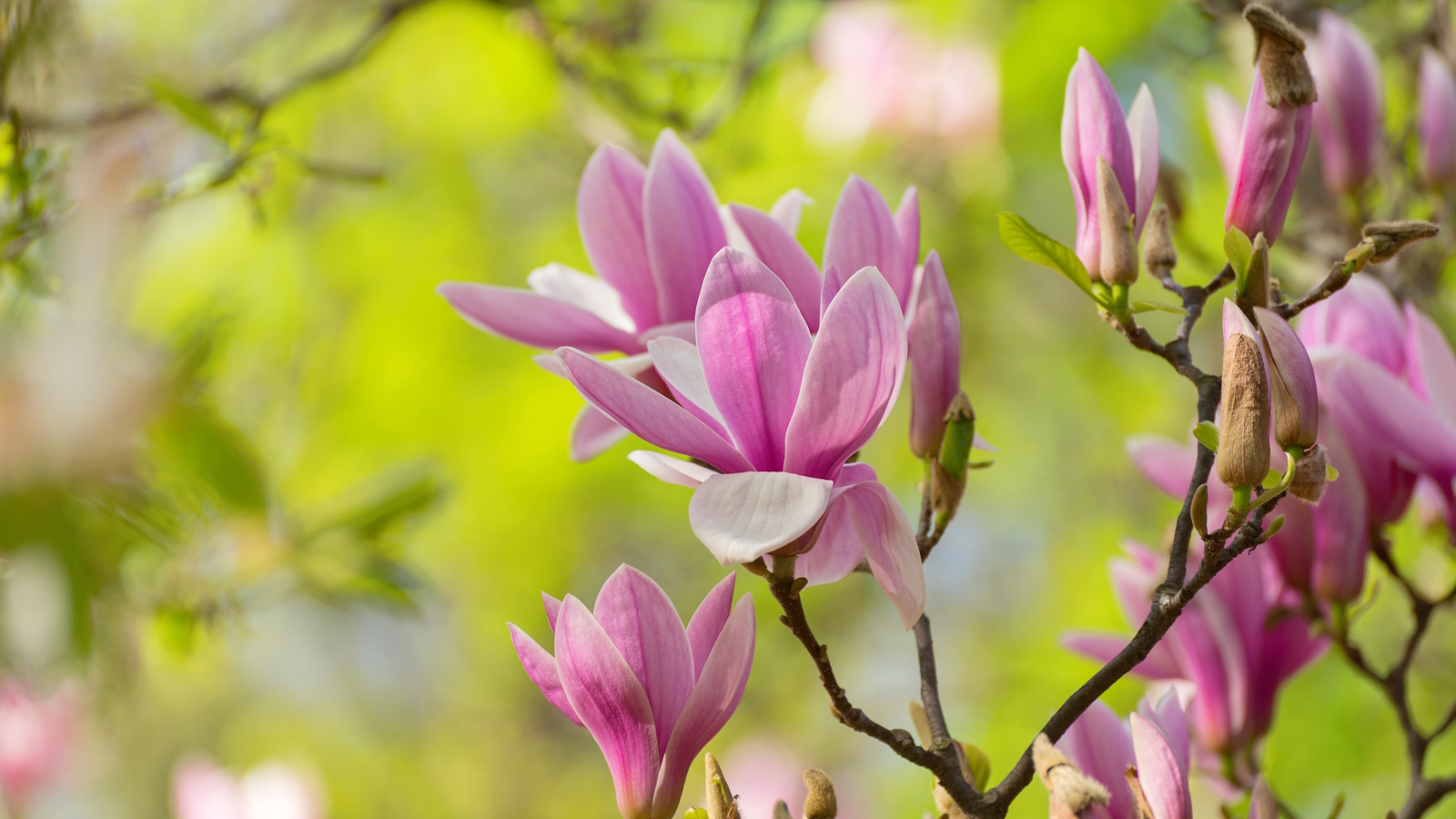 How to fertilize magnolias – garden experts reveal the secrets to better blooming, and timing is critical
How to fertilize magnolias – garden experts reveal the secrets to better blooming, and timing is criticalMagnolias are famed for their spring flowers, and feeding at the right time can give trees a boost
By Thomas Rutter Published
-
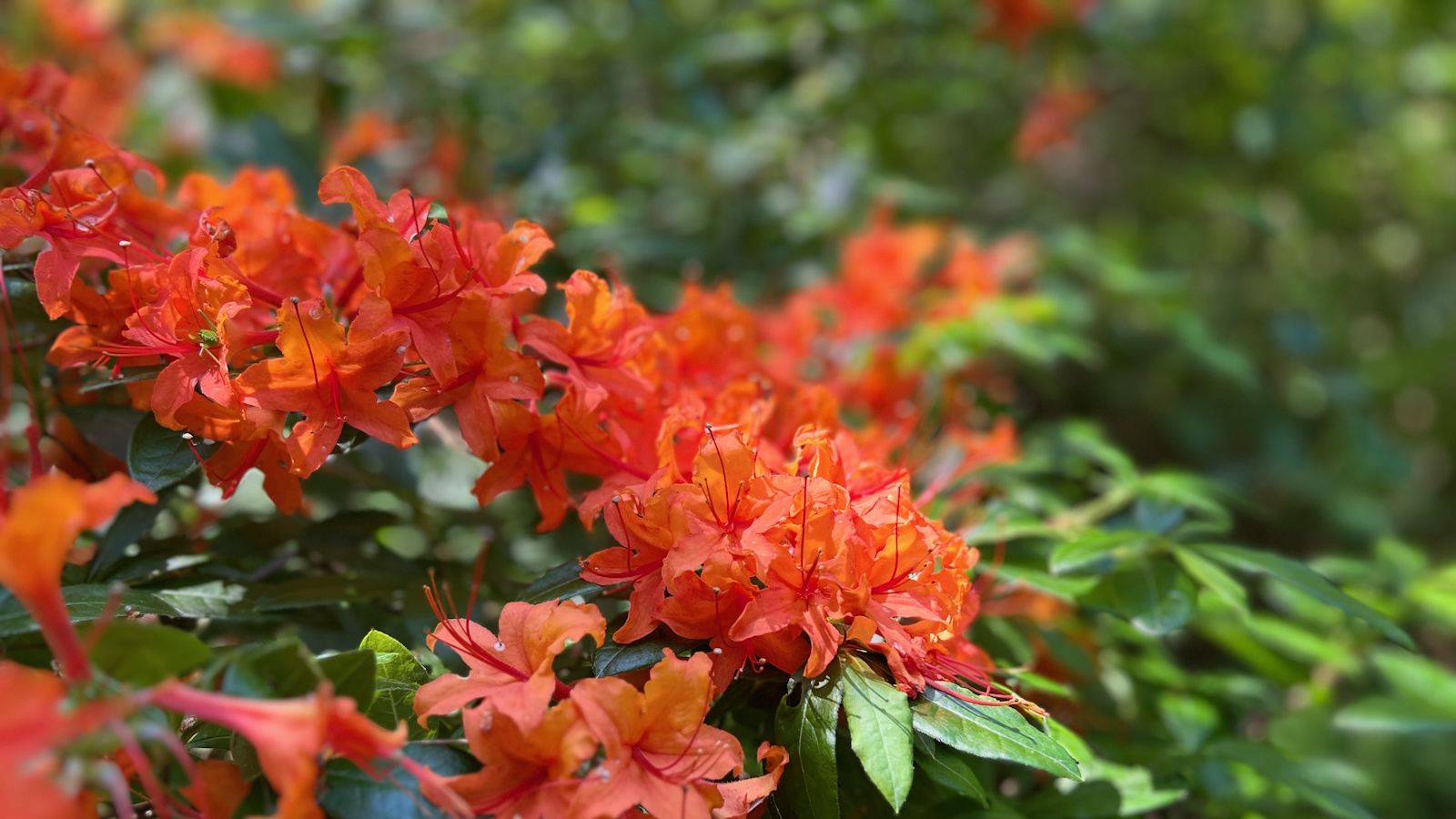 How to revive old rhododendron plants – pruning advice from a professional gardener to save your struggling shrubs
How to revive old rhododendron plants – pruning advice from a professional gardener to save your struggling shrubsWith the right pruning approach, you can rejuvenate old and woody rhododendrons
By Thomas Rutter Published
-
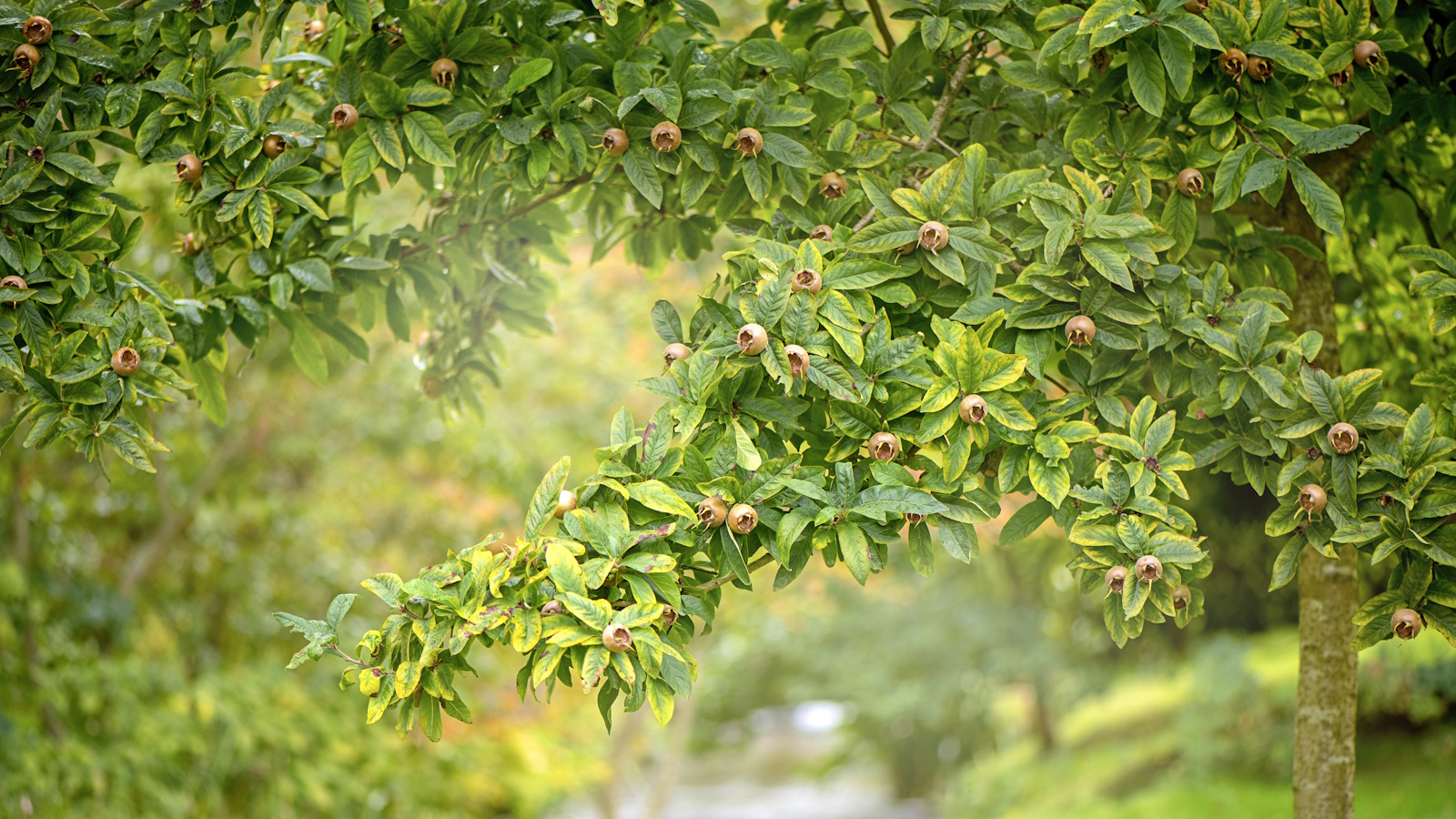 How to grow medlar trees – to enjoy a harvest of unusual fruits from this forgotten heritage species
How to grow medlar trees – to enjoy a harvest of unusual fruits from this forgotten heritage speciesMedlar fruits were once a popular delicacy, yet today, they are a rare find
By Thomas Rutter Published
-
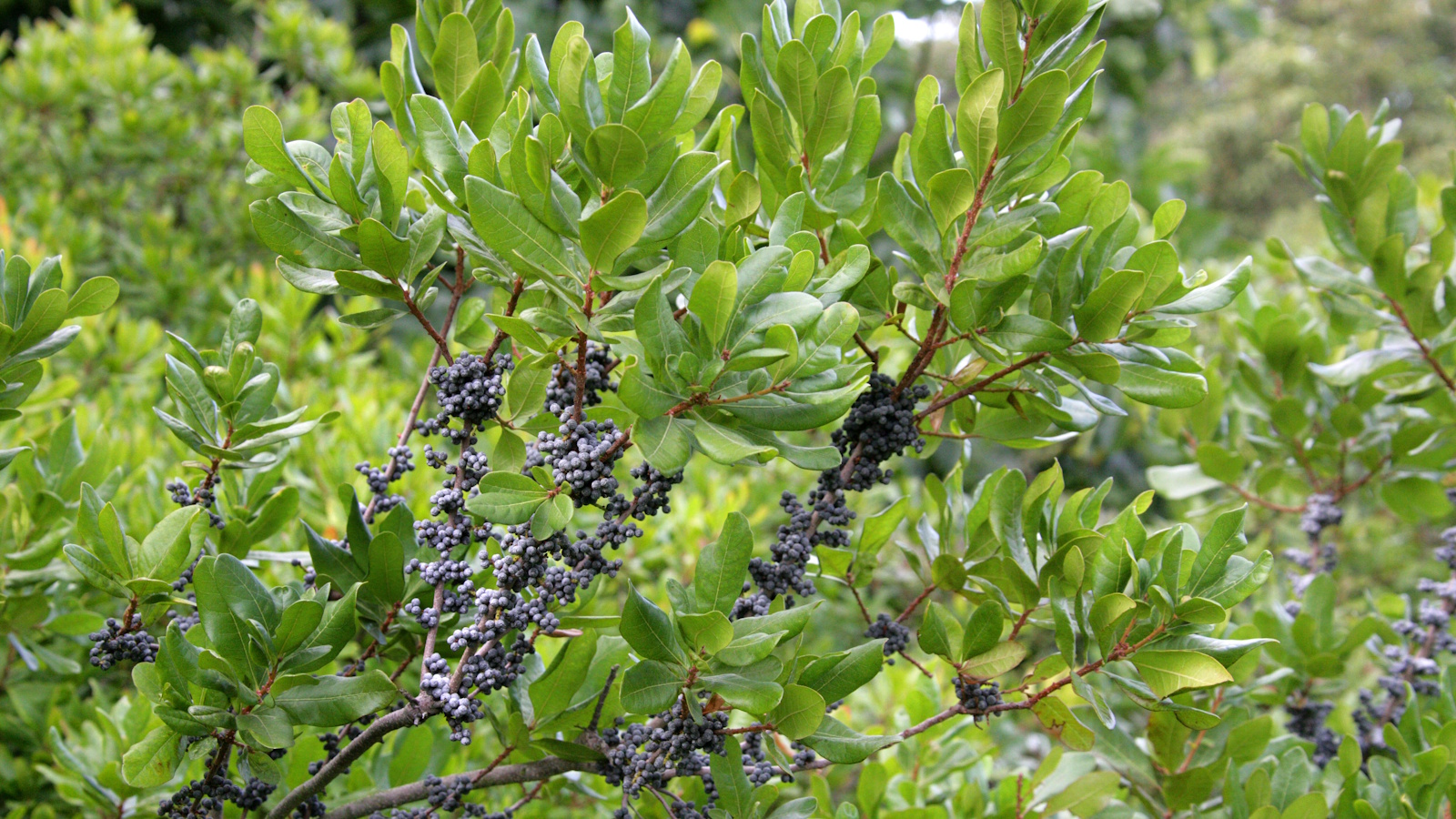 Best fragrant shrubs – 5 perfumed plants to transform garden borders and pot displays this summer
Best fragrant shrubs – 5 perfumed plants to transform garden borders and pot displays this summerGrow one or more of the best fragrant shrubs to add a sensory element to your yard
By Thomas Rutter Published

